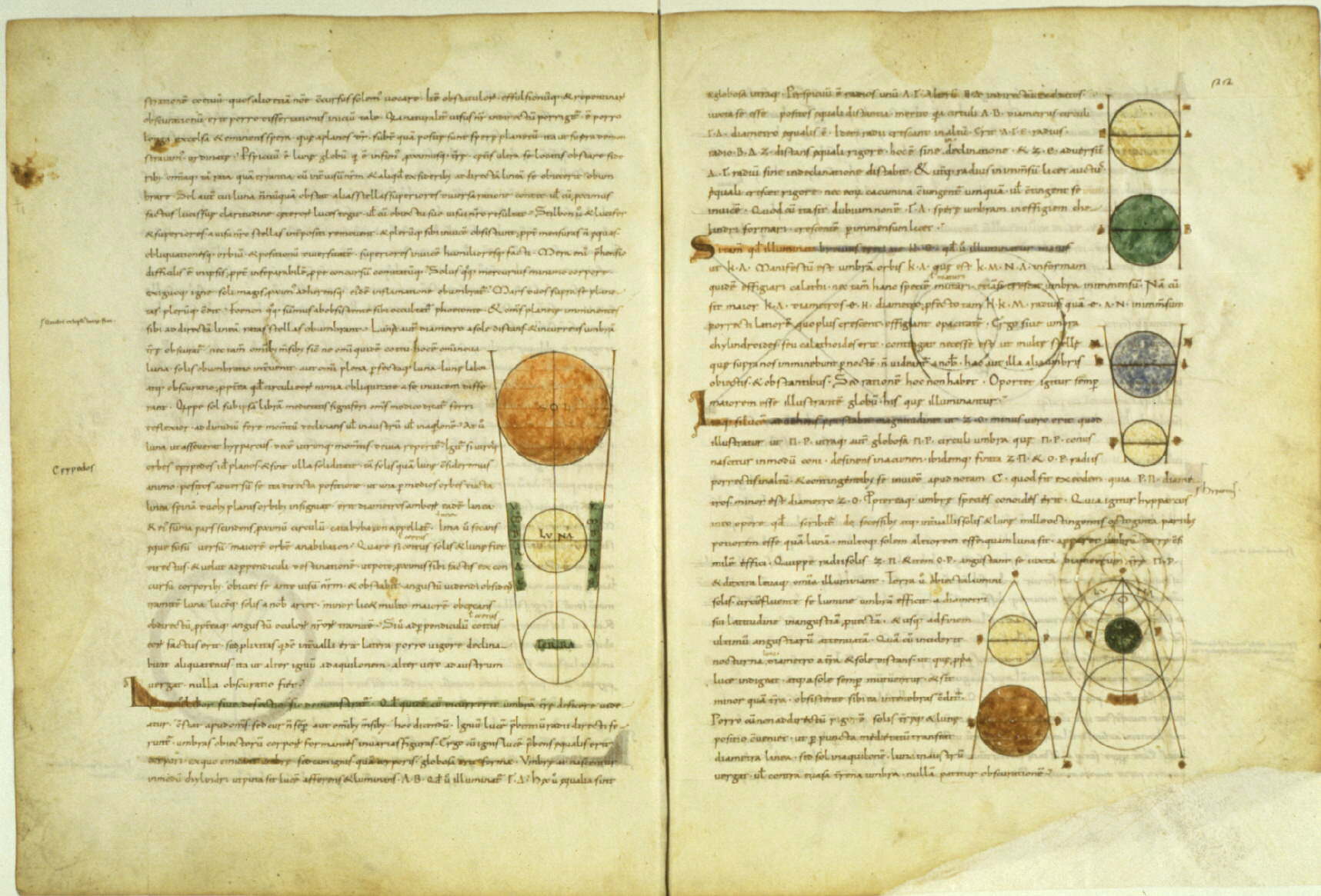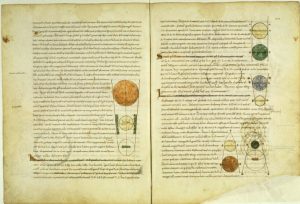
The Timaeus
The Composition of the Soul
“We shall therefore borrow all our Rules for the Finishing our Proportions, from the Musicians, who are the greatest Masters of this Sort of Numbers, and from those Things wherein Nature shows herself most excellent and compleat.” Leon Battista Alberti (1407-1472).

In The Timaeus, Plato (d. 347 B.C.) was one of the first to write an explicit description of how all that exists is ultimately a single being:
“God, purposing to make the universe most nearly like the every way perfect and fairest of intelligible beings, created one visible living being, containing within itself all living beings of the same natural order.”

“There exists:
first, the unchanging form, uncreated and indestructible, admitting no modification and entering no combination,……
second, that which bears the same name as the form and resembles it……and
third, space which is eternal and indestructible, which provides a position for everything that comes to be.”
(Timeus, 20)
For Plato one of the “best, highest or fairest ways” in which Being and Existence, the one God and the multiplicity of things, are bound together as a single reality, is the suffusion of harmony and proportion throughout creation.
“The fairest of all bonds is that which makes of itself and the terms it binds together most utterly one, and this is most perfectly effected by a progression.”(Timeus, 4)
also translated as….
“The best bond is the one that effects the closest unity between itself and the terms it is combining; and this is best done by a continued geometrical proportion”
The idea is that the harmoniously interdependent relationship of parts, within the whole, and to the whole, symbolises the relationship of ourselves and our universe of space and time, with the “single” whole; our metaphysical reality. Thus, to be concerned with harmonious creation, be it architectural, artistic, musical, or even agricultural, came to be seen as a natural consequence of awareness of our harmonious relationship with God.
To conclude this page, here is more from Plato’s Timeus (6), which introduces the profound idea of the “soul” being the synthesis and intermediary between the Essence of the universe and the universe itself:
Taking “Same ” to refer to the “indivisible, unchangeing Existence (Essence)” and “different” to refer to “the divisible, changing existence of the physical world”, (or vice versa…) it appears that Plato is describing the soul as the intermediate “synthesis which links and unites the Essence with the world. It is this “soul”, this “intermediate existence” which has been divided into harmoniously “appropriate subdivisions” summarised in the “”lamda” configuration at the bottom of the page, and which for Pythagoras summed up the essence of harmony.
“God did not of course contrive the soul later than the body, as it has appeared in the narrative we are giving; for when he put them together he would never have allowed the older to be controlled by the younger.
Our narrative is bound to reflect much of our own contingent and accidental state.
But God created the soul before the body and gave it precedence both in time and value, and made it the dominating and controlling partner. And he composed it in the following way and out of the following constituents;
From the indivisible, eternally unchanging Existence [Essence] and the divisible, changing Existence of the physical world he mixed a third kind of existence intermediate between them: again with the Same and the Different he made, in the same way, compounds intermediate between their indivisible element and their physical and divisible element: and taking these three components he mixed them into a single unity, forcing the Different, which was by nature allergic to mixture, into union with the Same, and mixing both with Existence.
Having thus made a single whole of these three, he went on to make appropriate subdivisions, each containing a mixture of the Same, and Different, and Existence. He began the division as follows.He first marked off a section of the whole, and then another twice the size of the first; next a third, half as much again as the second and three times the first, a fourth twice the size of the second, a fifth three times the third, a sixth eight times the first, a seventh twenty-seven times the first.”


























